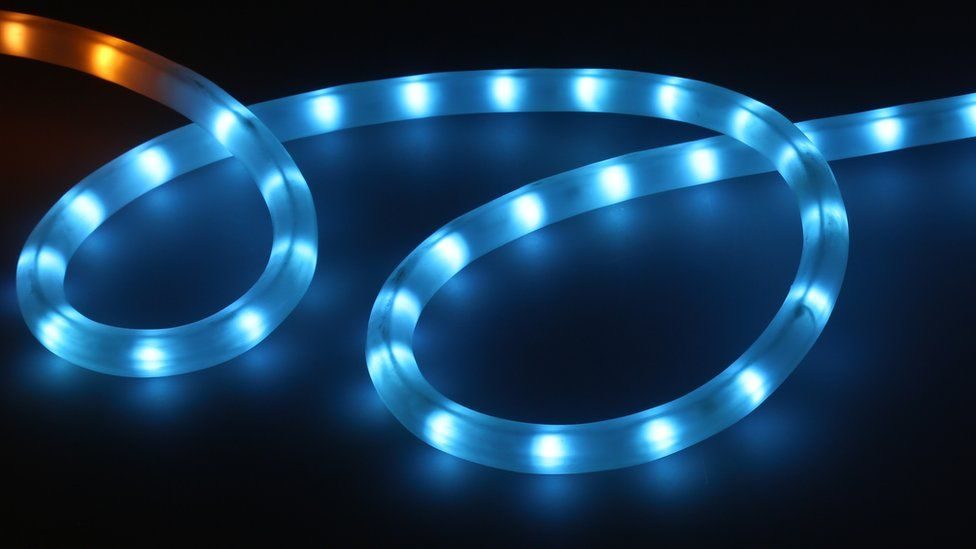It’s the semiconductor that is used in the manufacture of the LED chip, which decides the color. The most common chips utilize indium gallium nitride (InGaN) to produce blue LEDs and gallium-aluminum-arsenide-phosphide (GaAlAsP) to create orange, yellow, and green LEDs.
The visible spectrum consists of the broader spectrum is produced by phosphors. The higher CRI is, the more precisely the colours of objects are captured.
Light Emitting Diode technology
Light emitting diodes use an exclusive semiconductor material that allow the flow of current in one direction only. This allows them to be extremely efficient in the conversion of electrical energy into visible light.
The atoms of the p type material receive electrons from the types n. The electrons are then deposited into the holes of materials of the p type.
The P-N junction of the p-n junction of an LED is a lot doped by particular semiconductors to create the light with different wavelengths. This is the reason LEDs have their distinctive color and it’s what sets them against other lighting sources like lasers. The LED’s epoxy body acts like a lens and concentrates the photons emitted by the p-n junction into single spot of light in the top.
Color Temperature
The color temperature of LED lighting is determined by Kelvin (K). Different color temperatures produce different shades. The color temperature of a light can play a role in the ambience that is created by light.
Warm LED light bulbs (2700K-3000K) are similar in the color to a traditional incandescent bulb and is best suited for rooms that require a comforting atmosphere is desired. Cool LED lighting (3000K-4900K) create a vibrant white or den san vuon haledco yellowish hue and work well in workstations, vanities or kitchens. The light that is daylight (up to 5500K) light creates a blueish-white color that’s often used for commercial use.
Due to its oblong form due to its oblong shape, the spectral output of LEDs is different from the incandescent light above. It’s due to the p-n transistor’s structure. The emission peak shifts with the operational current.
Color Rendering Index
The CRI is the ability that a light source has to render accurately colours. It’s essential to possess the highest CRI, as this will allow the viewer to observe things in their real colors.
The traditional CRI measurement is a comparison of the test source with sunlight or an illuminator that has a 100-percent rating. The ColorChecker is an instrument which can be used to measure color.
It’s important to look for LEDs with CRIs above 90 when shopping. It’s a fantastic choice when you need precise colour rendition such as galleries, stores for sale, and jewelry displays. High CRI can also make an ideal lighting system for houses and helps create an atmosphere that’s more relaxed.
Full Spectrum as well as Narrow Spectrum Narrow Spectrum
Many LED lights are advertised as being full spectrum, however the intensity of the spectral spectrum varies from lights to sources. For example, some LEDs employ various phosphors that produce distinct colors that when combined create white light. It can have a CRI of over 80. It is often called a wide spectrum light.
Other LED lights utilize a single type of phosphor to power their entire LED. They’re usually monochromatic, which doesn’t satisfy needs for transmission-fluorescence microscopy. The narrow spectrum LEDs tend to flood the canopy of a plant, ignoring lower leaves that can be troublesome in plants like for instance the Cranefly Orchid (Tipularia discolor). Additionally, LEDs that are narrow spectrum do not have the wavelengths that are required to produce photosynthesis. This can result in a slow growth.
Apps
For the creation of LEDs One of the main problems are maximizing the light generated within hybrid semiconductor materials as well as the efficient extraction of that light into the atmosphere. Because of the total internal reflection phenomenon, only an incredibly small portion of illumination that is produced isotropically within the semiconductor will escape the surface.
By varying the gap between energy and band of the semiconductor used in their manufacture, the emission spectrum of LEDs with different kinds of LEDs can be altered. The most common diodes use the groups III of the periodic table and V like gallium nitride SiC, ZnSe, or GaAlAsP (gallium aluminum arsenic and phosphide), to produce the required wavelength bands.
A lot of fluorescent microscopy techniques require high-power LEDs with narrow spectrum emission bands to ensure efficient stimulation of fluorophores. Modern LED lamphouses include individually adjustable modular LED modules that permit the user to select the required wavelength range for any particular use.

